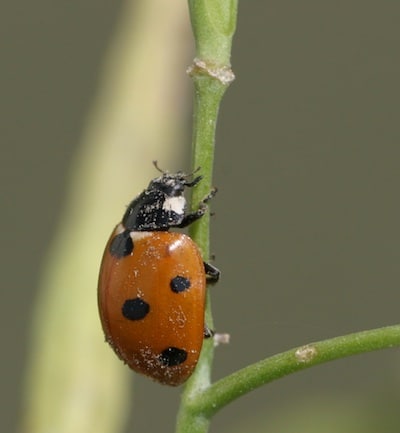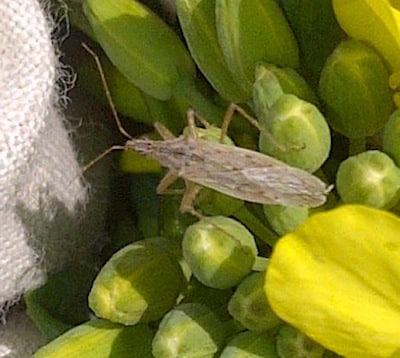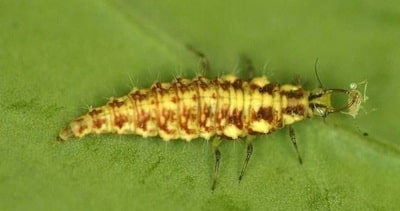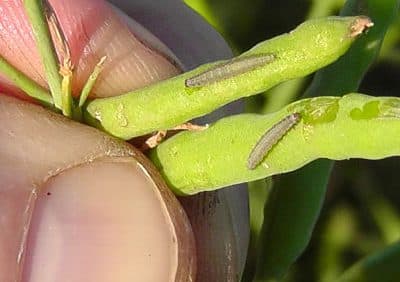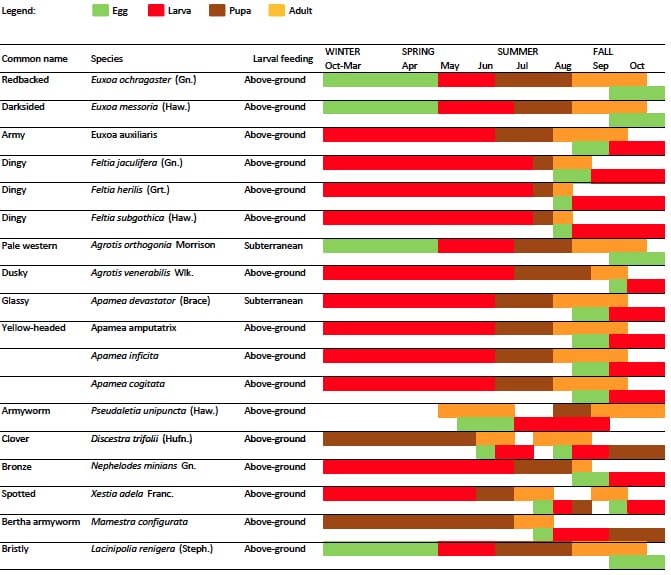Cabbage seedpod weevil. Don’t spray until at least 10% flower, and even then holding off until the podding begins may provide the greatest economic return. Alberta forecasting.
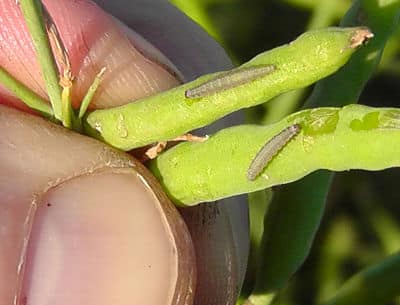
Diamondback larvae feeding on pods. The action threshold for diamondback larvae feeding on pods is 200-300 larvae per square metre. This threshold is based on stands of 150-200 plants per square metre (15-20 per square foot). Thresholds should be lowered for thinner stands. For immature and flowering fields the threshold is 100-150 larvae per square metre, based on the same dense stand of 150-200 plants per square metre. How to count diamondback larvae: Mark off 1/10 of a square metre — about one square foot. Pull plants from this area, knock them on the hood of the truck, and then count the larvae that come loose. Multiply that number by 10 to get larvae per square metre. Repeat at various locations throughout a field. Entomologists do not recommend measurements based on counts for single plants because it may give a skewed impression of the threat. Click here for a PDF on diamondback ID, scouting tips and thresholds.
Cutworm. Reports of cutworm infestation continue. Some exceed 30 mm (1.25”) in length and are likely close to the pupating stage of their lifecycle, which is when crop feeding ends. Full grown dingy cutworms range from 32 to 40 mm in length. Dingy cutworms overwinter as larvae and will be larger at this time, with pupation commencing usually from mid to late June depending on climatic conditions. Redbacked and pale western cutworms overwinter as eggs and tend to be smaller at this time, pupating nearer the end of June or early July. (See the table at the bottom of this article for staging by species.)
Bertha armyworm. Adult moths are starting to emerge, and already at moderate risk numbers in some traps in Manitoba. This is just a heads up for later in the season when larvae start to emerge.
Beneficials active. A key reason to follow thresholds, besides the potential to save spray costs, is to avoid spraying beneficial insects unless absolutely necessary. Beneficials can help control diamondback moth larvae, lygus bugs, bertha armyworm and other pests of canola at the flowering and pod stages.
